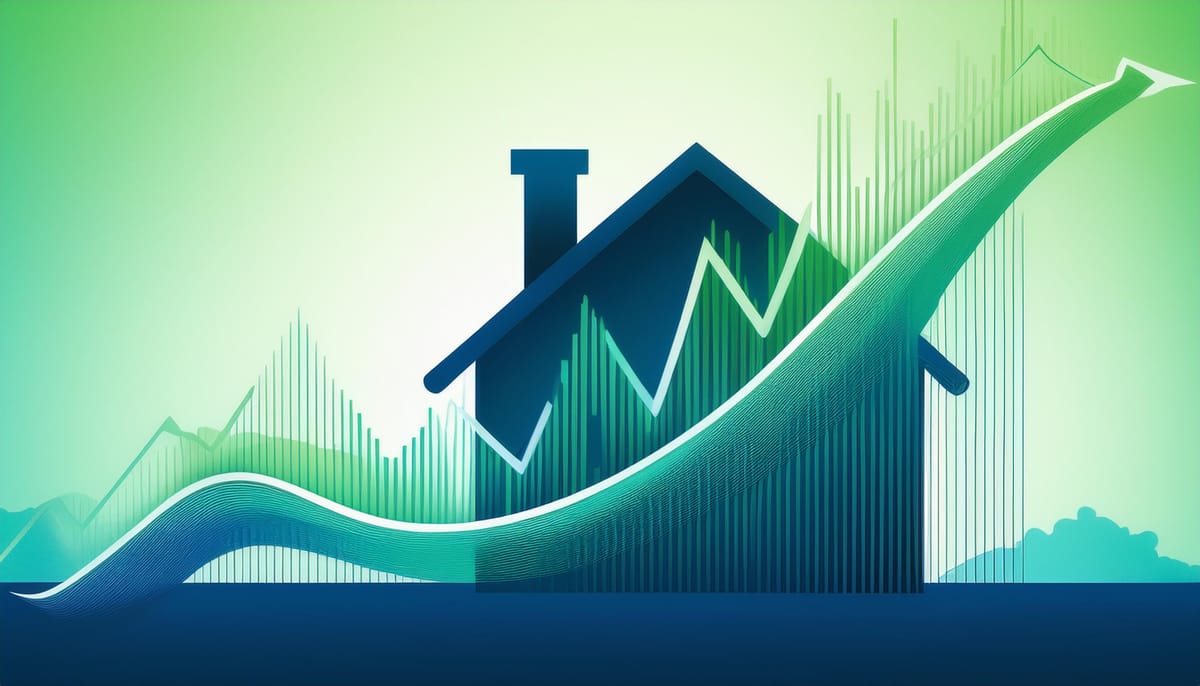LIBOR: The Benchmark That Shaped Global Finance
In the complex world of finance, few terms have held as much sway as LIBOR. For decades, this acronym has been the pulse of the global financial system, influencing everything from your mortgage payments to complex derivative contracts. But what exactly is LIBOR, and why has it been so crucial? Let's dive into the fascinating world of the London Interbank Offered Rate.
What is LIBOR?
LIBOR, short for London Interbank Offered Rate, has been a cornerstone of the financial world since the 1980s. Think of it as the financial equivalent of a weather vane, indicating which way the winds of interest rates are blowing.
At its core, LIBOR is an average interest rate calculated from estimates submitted by the leading banks in London. These banks would report the rate at which they could borrow from other banks, providing a benchmark that reflected the overall health of the financial system.
The LIBOR Ecosystem
| Aspect | Description |
|---|---|
| Full Name | London Interbank Offered Rate |
| Currencies | Originally calculated for 5 currencies: USD, EUR, GBP, JPY, CHF |
| Maturities | 7 different maturities: overnight/spot next, 1 week, 1, 2, 3, 6, and 12 months |
| Daily Rates | 35 different LIBOR rates calculated and reported each business day |
| Market Size | Underpinned an estimated $350 trillion of financial contracts |
| Calculation Method | Trimmed arithmetic mean of submitted rates from panel banks |
| Publication Time | Approximately 11:55 am London time |
This table gives you a snapshot of the LIBOR ecosystem. It's like a financial octopus, with tentacles reaching into various currencies and time frames, touching trillions of dollars in financial instruments.
The Rise of LIBOR: A Financial Juggernaut
LIBOR didn't just appear overnight. Its rise to prominence is a tale of globalization, financial innovation, and the increasing interconnectedness of markets.
LIBOR's Early Days
In the 1980s, as international banking grew more complex, there was a need for a standardized interest rate benchmark. Enter LIBOR. It was like introducing a common language for banks around the world. Suddenly, financial institutions had a universal reference point for pricing loans and other financial products.
The Golden Age of LIBOR
LIBOR's influence grew rapidly. By the early 2000s, it had become the go-to benchmark for a vast array of financial products. From adjustable-rate mortgages to complex derivatives, LIBOR was the foundation upon which trillions of dollars of financial contracts were built.

Learn how to avoid risky financial products.
LIBOR in Action: Its Many Uses
LIBOR wasn't just a number on a screen; it was a force that shaped the financial lives of millions. Let's explore some of its key applications:
1. Setting Mortgage Rates
For many homeowners with adjustable-rate mortgages, LIBOR was the invisible hand that could raise or lower their monthly payments. As LIBOR fluctuated, so did the interest rates on these mortgages.
2. Corporate Borrowing
Companies around the world used LIBOR as a benchmark for their borrowing costs. A loan might be priced at "LIBOR plus 2%," meaning the interest rate would float with LIBOR, plus an additional 2 percentage points.
3. Derivatives Market
In the complex world of derivatives, LIBOR was king. Interest rate swaps, one of the largest financial markets in the world, often used LIBOR as their reference rate.

Explore interest rate swaps: Learn how these powerful derivatives work, their benefits, risks, and impact on global financial markets.
4. Student Loans
Many private student loans in the United States were tied to LIBOR. As the rate changed, so did the interest charged on these loans, affecting millions of students and graduates.
5. Measuring Financial Health
LIBOR served as a barometer for the overall health of the financial system. A rising LIBOR could indicate increasing risk or tightening credit conditions in the banking sector.
The LIBOR Calculation: A Daily Financial Ritual
The daily LIBOR setting was a financial ritual that impacted markets worldwide. Here's how it worked:
- Submission: Each morning, a panel of major banks would submit their borrowing rates.
- Calculation: The highest and lowest rates were discarded, and an average was calculated from the remaining rates.
- Publication: At 11:55 am London time, the new LIBOR rates were published and disseminated globally.
This process, repeated daily, set the stage for countless financial transactions and valuations around the world.
The Dark Side of LIBOR: Scandal and Manipulation
Like any powerful system, LIBOR was not immune to abuse. In 2012, a major scandal erupted when it was discovered that some banks had been manipulating LIBOR for their own benefit.
The LIBOR Scandal Explained
Banks were submitting false rates to influence LIBOR in ways that benefited their trading positions. It was as if the referees in a sports match were secretly betting on the outcome and adjusting the score to suit their bets.
The scandal shook the financial world, resulting in billions in fines and a severe loss of trust in the banking system. It was the beginning of the end for LIBOR as we knew it.
The Twilight of LIBOR: Phaseout and Transition
In the wake of the scandal and due to structural changes in the banking sector, regulators decided that LIBOR needed to be phased out. This decision set in motion one of the largest financial transitions in history.
The LIBOR Transition Timeline
| Date | Event |
|---|---|
| 2017 | UK's Financial Conduct Authority announces LIBOR will be phased out |
| December 31, 2021 | Most LIBOR settings cease publication |
| June 30, 2023 | Final USD LIBOR settings to be discontinued |
This transition is not just a simple switch of benchmarks. It's a complex process affecting trillions of dollars in financial contracts and requiring massive changes in systems, processes, and legal agreements across the global financial industry.
LIBOR's Replacements: The New Era of Benchmark Rates
As LIBOR fades into financial history, new benchmarks are taking its place. These rates are designed to be more robust and less susceptible to manipulation.
Key LIBOR Alternatives
| Currency | New Reference Rate | Administering Body |
|---|---|---|
| USD | Secured Overnight Financing Rate (SOFR) | Federal Reserve Bank of New York |
| GBP | Sterling Overnight Index Average (SONIA) | Bank of England |
| EUR | Euro Short-Term Rate (€STR) | European Central Bank |
| JPY | Tokyo Overnight Average Rate (TONA) | Bank of Japan |
| CHF | Swiss Average Rate Overnight (SARON) | SIX Swiss Exchange |
These new rates are fundamentally different from LIBOR. They're based on actual transactions rather than estimates, making them harder to manipulate. It's like moving from a system based on opinion polls to one based on actual votes cast.
The Impact of LIBOR's Demise on Investments
The transition away from LIBOR is not just a technical change; it has significant implications for investors and financial markets.
1. Bond Markets
Many floating-rate bonds use LIBOR as a reference rate. The transition requires changes to bond documentation and could affect bond valuations.

Learn how to protect your portfolio from unnecessary volatility
2. Derivatives
The massive derivatives market, heavily reliant on LIBOR, is undergoing a fundamental shift. New pricing models and risk management strategies are being developed to adapt to the new benchmark rates.

Discover how to use derivatives to protect your portfolio.
3. Loan Markets
Corporate loans, particularly those with floating rates, are being renegotiated to incorporate new reference rates. This process could impact loan pricing and availability.
4. Investment Funds
Money market funds and other investment vehicles that relied on LIBOR-based assets are adjusting their strategies and yield calculations.
5. Real Estate
The real estate sector, particularly commercial real estate with floating-rate loans, is navigating the transition to new benchmark rates.

Learn how to generate passive income.
Navigating the Post-LIBOR World: Challenges and Opportunities
The end of LIBOR presents both challenges and opportunities for investors and financial professionals.
Challenges:
- Contract Remediation: Existing contracts referencing LIBOR need to be amended or renegotiated.
- Systems Updates: Financial institutions must update their systems to handle new benchmark rates.
- Risk Management: New strategies are needed to manage interest rate risk in the post-LIBOR era.
Opportunities:
- Innovation: The transition is spurring innovation in financial products and risk management tools.
- Market Inefficiencies: The complex transition may create opportunities for savvy investors to capitalize on market inefficiencies.
- Enhanced Stability: The new benchmark rates, being more robust, could lead to a more stable financial system in the long run.
The Legacy of LIBOR
As we bid farewell to LIBOR, it's worth reflecting on its enormous impact on global finance. For decades, it was the invisible thread that connected countless financial transactions around the world. Its rise and fall mirror the evolution of the global financial system – from rapid growth and innovation to crisis and reform.
The LIBOR transition is more than just a change in interest rate benchmarks. It's a testament to the dynamic nature of financial markets and their ability to adapt and evolve. As we move into this new era, the lessons learned from LIBOR – both its utility and its flaws – will continue to shape the future of finance.
FAQs About LIBOR
- Q: What does LIBOR stand for? A: LIBOR stands for London Interbank Offered Rate.
- Q: Why is LIBOR being phased out? A: LIBOR is being phased out due to concerns about its reliability and susceptibility to manipulation, as well as the decline in the underlying market it was meant to represent.
- Q: What will replace LIBOR? A: Various alternative reference rates are replacing LIBOR, such as SOFR for USD, SONIA for GBP, and €STR for EUR.
- Q: How does the LIBOR transition affect my mortgage? A: If you have an adjustable-rate mortgage tied to LIBOR, your lender should communicate any changes. Most likely, your loan will transition to a new reference rate.
- Q: When will LIBOR completely cease to exist? A: The final USD LIBOR settings are scheduled to be discontinued after June 30, 2023.
Looking Ahead: The Future of Benchmark Rates
As we close the chapter on LIBOR, the financial world is embracing a new era of benchmark rates. These new rates promise greater stability and transparency, but they also bring new challenges and learning curves.
For investors, staying informed about these changes is crucial. Whether you're managing personal investments or working in the financial industry, understanding the post-LIBOR landscape will be key to navigating the evolving world of finance.
Want to learn more about how these changes might affect your investments? Explore our other articles on benchmark rates, interest rate risk, and financial market structure. Stay ahead of the curve in the ever-changing world of finance!





